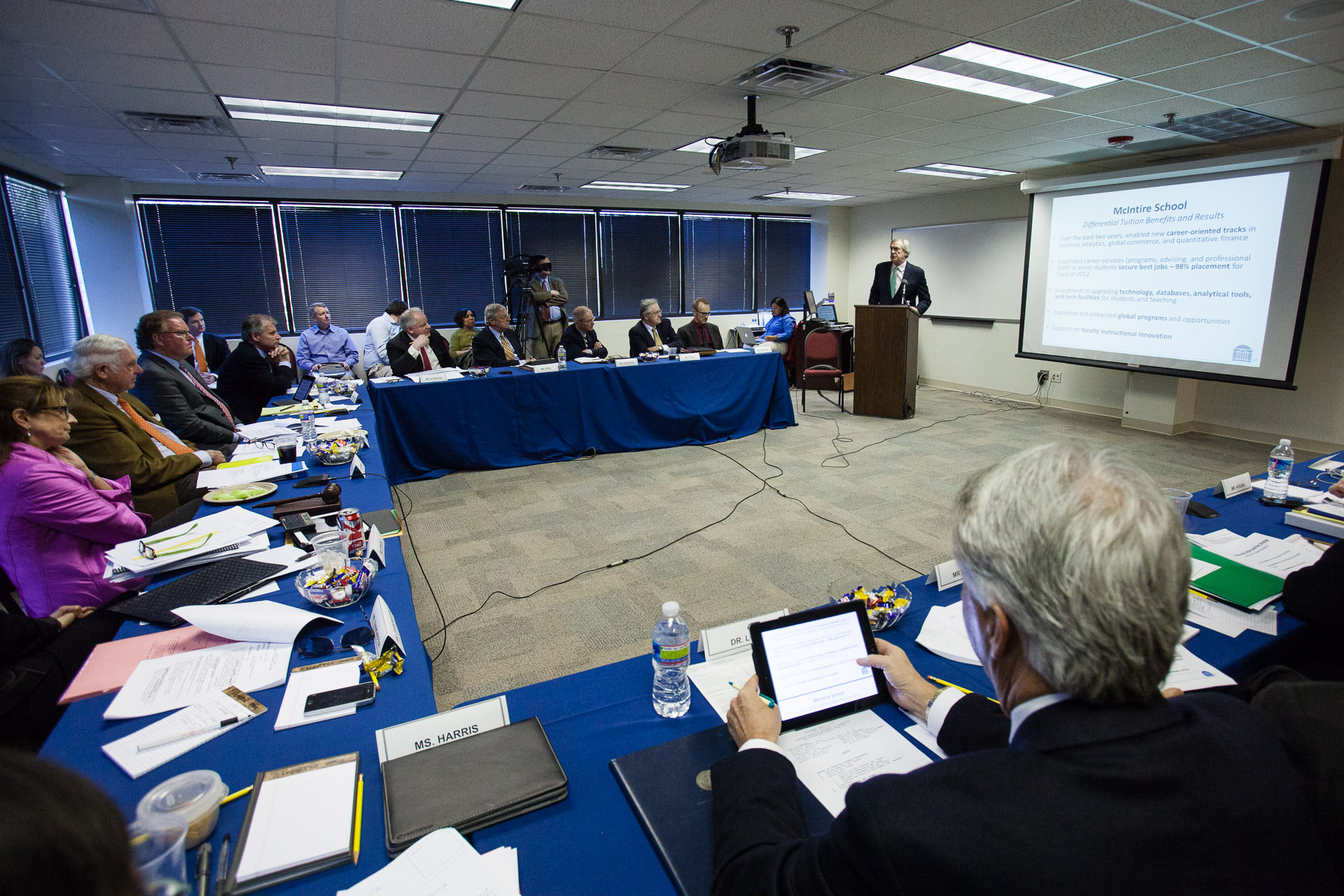University of Virginia administration presented a draft four-year University funding plan to the Board of Visitors’ Finance Committee on Wednesday.
The proposed plan includes a new tuition and fee strategy that calls for modest increases in base tuition for each of the next four years, coupled with differential tuition rates – additional costs depending on factors such as school or year of study – designed to give both the University and incoming students a clear sense of future costs.
“This multi-year approach means that we can deliver sustained excellence by continually aligning resources with strategic priorities,” President Teresa A. Sullivan said at the meeting. “It allows us to be nimble and responsive, while delivering the best undergraduate experience in the world at a predictable price.”
Board members took no action on the plan at the meeting, but indicated that they would ask for additional information as they prepare to set tuition and fees for the upcoming 2013-14 academic year and set the year’s budget.
The proposed tuition and fee plan calls for a 2.9 percent increase for in-state undergraduate students for the 2013-14 academic year, and an increase of no more than 2.9 percent in each of the subsequent three years, said Executive Vice President and Chief Operating Officer Patrick Hogan. Those increases would represent smaller percentage increases than in recent years. The plan calls for additional annual increases of about 1 percent for out-of-state students.
“These modest and predictable base tuition increases for in-state students are not based on what the market will bear, but rather on the continued commitment to affordability,” Hogan said.
The proposal also outlines additional tuition costs to students in certain schools and in their third and fourth years at the University, when class sizes are smaller and the cost to educate an individual student is higher, Hogan said.
The meeting included presentations by Dean Carl Zeithaml of the McIntire School of Commerce – the only school at the University to currently employ differential tuition – as well as by Dean James A. Aylor of the School of Engineering and Applied Science, which currently charges a lab fee to students, and Dean Meredith Jung-En Woo of the College and Graduate School of Arts & Sciences, which is interested in employing differential tuition.
Zeithaml said differential tuition has been an asset to McIntire in recent years, and that the practice could potentially be employed elsewhere on Grounds.
“The reason I’m here today is to tell you that it’s working, and it’s working really well,” Zeithaml told the board.
All three deans cited differential tuition as a way to increase the services available to students, such as career services and advising, and shore up increasing costs such as technology.
During the meeting, some board members expressed concern about increasing tuition or adopting a new model in which some students pay more than others. Rector Helen Dragas said she was glad that the administration developed the proposed four-year plan, but said she was reluctant to raise tuition during a period in which many Virginia families are not seeing comparable increases in earnings.
“I think we’re contemplating this as a question of tuition, and I think the core question is: How do we deliver a world-class education at a price that Virginians can afford? I think that’s our core mandated mission as a public university,” Dragas said.
Board member Frank Atkinson pointed out that the proposed 2.9 percent base tuition increase isn’t enough to keep pace with inflation plus cost increases mandated by the state government. It would take a tuition increase of about 5 percent to keep pace with those increases, he said.
The board has no immediate plans to vote on the four-year plan, but will set the tuition rate at a meeting of the full board later this month, and will vote to set next year’s budget at a meeting in May.
Media Contact
Article Information
April 3, 2013
/content/university-virginia-administration-presents-funding-plan-board-visitors

